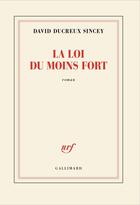-
Nombre de pages : (-)
-
Collection :
(-)
-
Genre :
(-)
-
Thème :
Non attribué
-
Prix littéraire(s) :
(-)
Résumé:
The Correspondence of John Wallis (1616 -1703) is a critically acclaimed resource in the history of early modern science. Volume IV covers the period from 1672 to April 1675 and contains over eighty previously unpublished letters. It documents Walliss role in the crucial debate over the method... Voir plus
The Correspondence of John Wallis (1616 -1703) is a critically acclaimed resource in the history of early modern science. Volume IV covers the period from 1672 to April 1675 and contains over eighty previously unpublished letters. It documents Walliss role in the crucial debate over the method of tangents involving figures such as Sluse, James Gregory, Hudde, Barrow, Newton, and Christiaan Huygens. In this way it illuminates further an important part of the historyof the calculus. Walliss letters also provide valuable new insights into mathematical book production and the importance of the international exchange of books in the growth and dissemination of mathematical knowledge. We learn more about the part played by the intelligencer John Collins and the astronomer royal John Flamsteed in the edition of Jeremiah Horroxs Opera posthuma, published by Wallis in 1673. There are also new insights on the background to Walliss early work on equations, and the reasons why hecriticized Gaston Pardiess proposed tract on motion. The causes of the breakdown in Walliss epistolary relation to Christiaan Huygens following the publication of the Horologium oscillatorium in 1673 are also revealed. Many letters reflect Walliss active involvement in the Royal Society. Through the medium of correspondence the Savilian professor participated in numerous debates such as those over the anomalous suspension of mercury in the Torricellian tube or Heveliuss use of plain sights in positional astronomy. The volume allows us to gain a deeper understanding of the background to these debates. Furthermore, the volume throws important new light on the history of the University of Oxford and of theUniversity Press in the early modern period. As keeper of the University Archives, Wallis was one of the institutions highest officers. Scarcely any event of note concerning the University did not require his involvement in some way, and this is reflected in numerous letters and documents which thevolume publishes for the first time.
Donner votre avis














